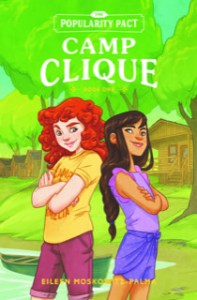How are you all doing? Anyone feeling like this #shelteringinplace is going on forever? Perhaps you feel like you are stuck in the Groundhog Day movie over and over? While these restrictions are necessary, it is still somewhat difficult to be stuck in a place of so much uncertainty. What will happen when things begin to open up? Will life go back to normal or will there be a NEW normal? At this point no one knows.
I decided to ask some of my fellow kidlit authors about what they are doing now and their hopes for the future. Perhaps reading these, you’ll feel that there is HOPE for life again, even if it’s a new normal.
After all, as Albert Einstein states, “In the middle of difficulty lies opportunity.”
” I don’t know what the future holds for in-person visits, but I sure hope that they happen. It is a treat to connect with writers in person. While they don’t, I will continue virtual visits and will keep on WRITING! After all, I’m a writer. My job is to get out great books that will connect with readers during all of these times!” — Nancy Castaldo
“For me, my schools have cancelled my workshops so there’s not much I can do, especially if they remain closed until September. I’ll re-evaluate then. In the meantime, I’ve been giving many free readings and mini workshops online and it’s been fun to interact with kids again!”– Lydia Lukidis
“Gosh, for now, nobody knows what will happen with in-person schools, much less in-person author visits. I’m certainly willing to adapt my presentations for virtual visits, but I’ll miss interactions with kids:( I will also increase my online classes and might seek out a faculty position with an MFA program, too. I’m recently divorced, so this financial hit of lost gigs is a bit of a wakeup call about the fragility of the freelance life. As for book publication, I think we’ll all have to be extra creative about online offerings.” — Donna Janell Bowman
“As teachers and school districts have reached out for permission to read my books aloud and make recordings, I’ve been asking how they plan to use the recordings with students. To say I’m blown away by their creative ideas would be an understatement!
Some are book specific, but many could be done with a wide variety of books. I’d like to find an easy-access way to share these great lesson ideas and teaching strategies with other educators. I’m still pondering the best way(s) to do that and how the lessons might work when the recorded read alouds are no longer available, but it’s exciting to think about. School closures have demanded so much creative thinking, and teachers have risen to the challenge. Educators rock!” — Melissa Stewart
“I’ve been connecting one-on-one with some enthusiastic readers” — Laurel Neme
“I am trying out my first virtual writing workshop lesson with middle schoolers (It helps to work in one!) next week. It’s specific to THE NEST THAT WREN BUILT, but could be adapted for other books, or even done without a book connection. If successful, I’ll work on marketing this as an alternative to in-person school visits.”– Randi Sonenshine
“My WFH (work-for-hire) writing projects have all been put on hold, so I most likely will dive into research for a couple MG projects that I have been working on.” — Lisa Idzikowski
“Today I held a virtual visit for kids at home. I used one of my school visits that I knew would translate okay via screen, was an older one that is not requested much for live visits (i.e. not my “best”). I promoted via e-newsletter (mostly teacher-librarians) and social media. I offered it for free but made a request in the registration and confirmation emails for donations and/or book purchases. I had 64 families register and probably 40 show up (many with 2 kids). So far I have received 1 donation and of course don’t know about purchases. I did it mostly for myself — I desperately miss teaching– but also as a test of the interest/ willingness-to-donate.” — Heather Montgomery
“I already do virtual visits and am happy to keep doing them, but I hope we won’t get rid of in-person visits. I was telling someone the other day about times when kids have come up to me with their private concerns, and that can’t happen through a Zoom meeting. But, I do think there’s a lot to offer with virtual visits too and I’d love to see them continue to evolve. I’ve been teaching writing classes online already and would love to do more of that, although again, as much as I love webinars, in-person classes are better. As for marketing, I think there’s an opportunity to have virtual tours across the world in collaboration with bookstores. The signed copies would be missed, though.” — Samantha Clark
“I have been doing virtual school visits for 5 years at least so I doubt that will change very much. But I intend to go back to in person visits. Physical presence has a power that virtual presence does not. I will be more mindful of keeping myself protected on the road, more hand washing, less handshaking. But my life has been a mix of virtual and personal connections for a long time now and I don’t see a need for it to change drastically. But here’s what I hope will be the longer term impact for publishing. This pandemic is proving that it’s possible to run a publishing house with the majority of staff working from home. Which means that even though big publishers will likely remain in NY, their work force could be much more geographically spread out and that would be good news indeed for diversity. The expense of living in or near NYC is what drives out diverse applicants and drives up the cost of producing books.” — Rosanne Parry
“All my spring school visits were cancelled (all have said they will rebook next year, but who knows if that will be possible.)” — Buffy Silverman
” I had a few events around my book launch but have had several events cancel or postponed until next year. I’m putting in conference proposals (NSTA?) in hopes I’ll be able to travel one day, creating digital resources kids can use now, doing occasional zooms (for free) with classes of kids. Fortunately I had several blog posts and podcast interviews that continue to roll out and keep my book in folks’ mind. Other than that, I’m trying to get more reviews on Amazon, B&N, Goodreads and offering to do the same for other creators. I figure that’s one of the best ways for books to be discovered right now.”– Kirsten Williams Larson
” I will be doing a virtual joint book launch with Teresa Robeson. I recently did three Zoom visits for schools and look forward to doing more of these going forward. Although I will be very happy to return to in person visits when it is safe to do so!” — Nancy Churnin
“With school visits, educator conferences, and book festivals all being cancelled, it leaves me wondering what will happen with my three new books coming out this summer and fall. I’m already focusing a bit of what I can do online but hope for some in-person events, too. I hope to jump back into in-person school visits in the fall but will happily Zoom with classes, too.” — Annette Whipple
And, me, what am I doing and what do I hope for? I, like everyone above hope very much to get back to doing in-school visits. The sense of energy and connection with the students from actually being in front of them is difficult to achieve in a virtual school visit. I believe that teachers want this, too. I am taking this time to work on something I’ve had percolating for years. I’m starting a new STEM podcast with Jed Doherty. Look for Solve It! — a brand new podcast for kids and families to learn how real scientists, engineers, and experts use curiosity, critical thinking, and creativity to solve everyday problems in their jobs. — Jennifer Swanson
Also good news is that agents are accepting submissions, and editorial meetings are still happening at publishers. Even though things may move more slowly, the publishing world churns on.
Finally I think we can all agree on one thing: TEACHERS and LIBRARIANS ROCK!!! Despite their many challenges they are doing a fabulous job connecting the best way they can with their students.
So, you see, even though we may all be hunkered down in our houses, the creative spirit lives on– THRIVES even! Let us all hope that one day soon we’ll all be able to get together in a classroom, at a conference or workshop, or even just for coffee, and share this spirit in person.
I leave you with this quote from a truly amazing and inspiring woman:
“You may not control all the events that happen to you,
but you can decide not to be reduced by them.” — Maya Angelou
Stay safe, my friends.
If you have things you are doing now, please let us know. If you have hopes for the future, also post below. Let’s promote HOPE!

 Eileen Moskowitz-Palma and I first crossed paths more than a decade ago, at the Backspace Writers Conference, in New York. I can’t remember which panels I attended, but one thing stands out: meeting Eileen. We were sitting in a large, well-lit room, waiting for the keynote to begin, when she turned around and smiled at me. It was the warmest, friendliest smile I had ever seen, and naturally I wanted to bask in her… Eileen-ness.
Eileen Moskowitz-Palma and I first crossed paths more than a decade ago, at the Backspace Writers Conference, in New York. I can’t remember which panels I attended, but one thing stands out: meeting Eileen. We were sitting in a large, well-lit room, waiting for the keynote to begin, when she turned around and smiled at me. It was the warmest, friendliest smile I had ever seen, and naturally I wanted to bask in her… Eileen-ness.
 MR: Camp Amelia is an adventure camp, with the focus on team spirit and athletic ability. There’s even a camp-wide sports competition (“the Cup”), where winning is everything. Were you sporty like Bea, or anxious like Maisy? Perhaps an amalgam of both?
MR: Camp Amelia is an adventure camp, with the focus on team spirit and athletic ability. There’s even a camp-wide sports competition (“the Cup”), where winning is everything. Were you sporty like Bea, or anxious like Maisy? Perhaps an amalgam of both?





